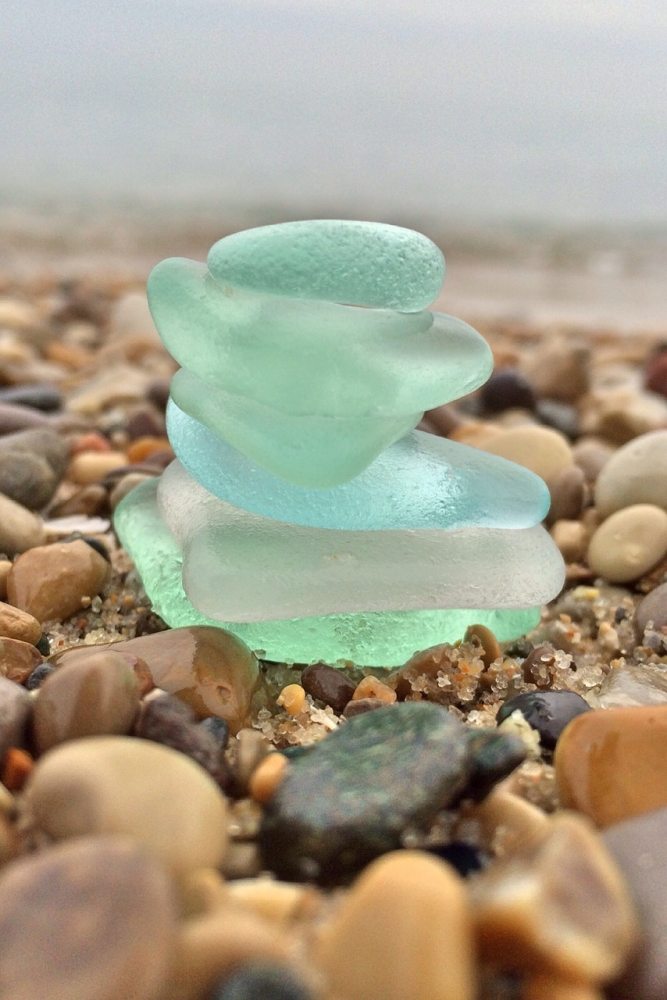August 14, 2015

by Carla Reiter
When Prof. Juan de Pablo and his collaborators set about to explain unusual peaks in what should have been featureless optical data, they thought there was a problem in their calculations. In fact, what they were seeing was real. The peaks were an indication of molecular order in a material thought to be entirely amorphous and random: Their experiments had produced a new kind of glass.
Their unforeseen discovery, reported in a paper published in the Proceedings of the National Academy of Sciences and chosen by Science as an editor’s choice paper in Materials Science, could offer a simple way to improve the efficiency of electronic devices such as light-emitting diodes, optical fibers and solar cells. It also could have important theoretical implications for understanding the still surprisingly mysterious materials called glasses.
“This is a big surprise,” de Pablo said. “Randomness is almost the defining feature of glasses. At least we used to think so. What we have done is to demonstrate that one can create glasses where there is some well-defined organization. And now that we understand the origin of such effects, we can try to control that organization by manipulating the way we prepare these glasses.”
De Pablo is a theorist and the Liew Family Professor in Molecular Engineering at the University of Chicago. He and Ivan Lyubimov, a postdoctoral fellow in his group, worked with a group of experimentalists led by Mark Ediger at the University of Wisconsin, doing computer simulations of their physical experiments on the Research Computing Center's supercomputing cluster, Midway.
The scientists grew the glass by vaporizing large organic molecules in a high vacuum and depositing them slowly, thin layer by thin layer, onto a substrate at a precisely controlled temperature. When the sample was thick enough, they analyzed it using spectroscopic ellipsometry—a technique that measures the way incident light or laser radiation interacts with the material being investigated.
“Our collaborators saw some intriguing peaks in these materials,” de Pablo said, “and those appear when you have some distinct molecular orientation in the material.” The researchers could not originally explain the origin of the peaks, or why their appearance depended on the temperature at which the glass was formed. However, when the group ran computer simulations of the experiments, the same signatures of orientation appeared. A significant fraction of the molecules in the glass were aligning themselves in concert. The question was, why?
The answer, the scientists discovered, lay in the way the material was created. In liquids—and glass is a type of liquid—the molecules at the surface interact with molecules in the air, sometimes causing them to pack together and line up differently than the randomly arrayed molecules in the bulk of the liquid. The vapor deposition process used in the experiments amounts to laying down one “surface” on top of another. The molecules in each layer get “trapped” in the orientation they had when they were truly, however briefly, on the surface. In order for this to happen, the researchers discovered, the glass must be grown within the relatively narrow temperature range at which a liquid changes into a solid-like glass. Varying the temperature within that window allows the scientists to “tune” the degree of order. Once the deposition process is finished, the material is stable and changing temperatures within a wide range doesn’t affect it.
Only a small fraction of the molecules in the group’s samples are oriented in a different direction than the rest of the glass molecules. But that is enough to change the optical properties of these materials tremendously. The group will continue to investigate these new materials, trying different molecules and looking to find out if they can enhance the effect.
A theoretical investigation of these findings also awaits.
“Glasses are one of the least understood classes of materials,” de Pablo said. “They have the structure of a liquid—disorder—but they’re solids. And that’s a concept that has mystified people for many decades. So the fact that we can now control the orientation of these disordered materials is something that could have profound theoretical and technological implications. We don’t know what they are yet—this is a new field of research and a class of materials that didn’t exist before. So we’re just at the beginning.”
- See the original article at http://news.uchicago.edu/article/2015/08/13/molecular-scientists-unexpectedly-produce-new-type-glass.